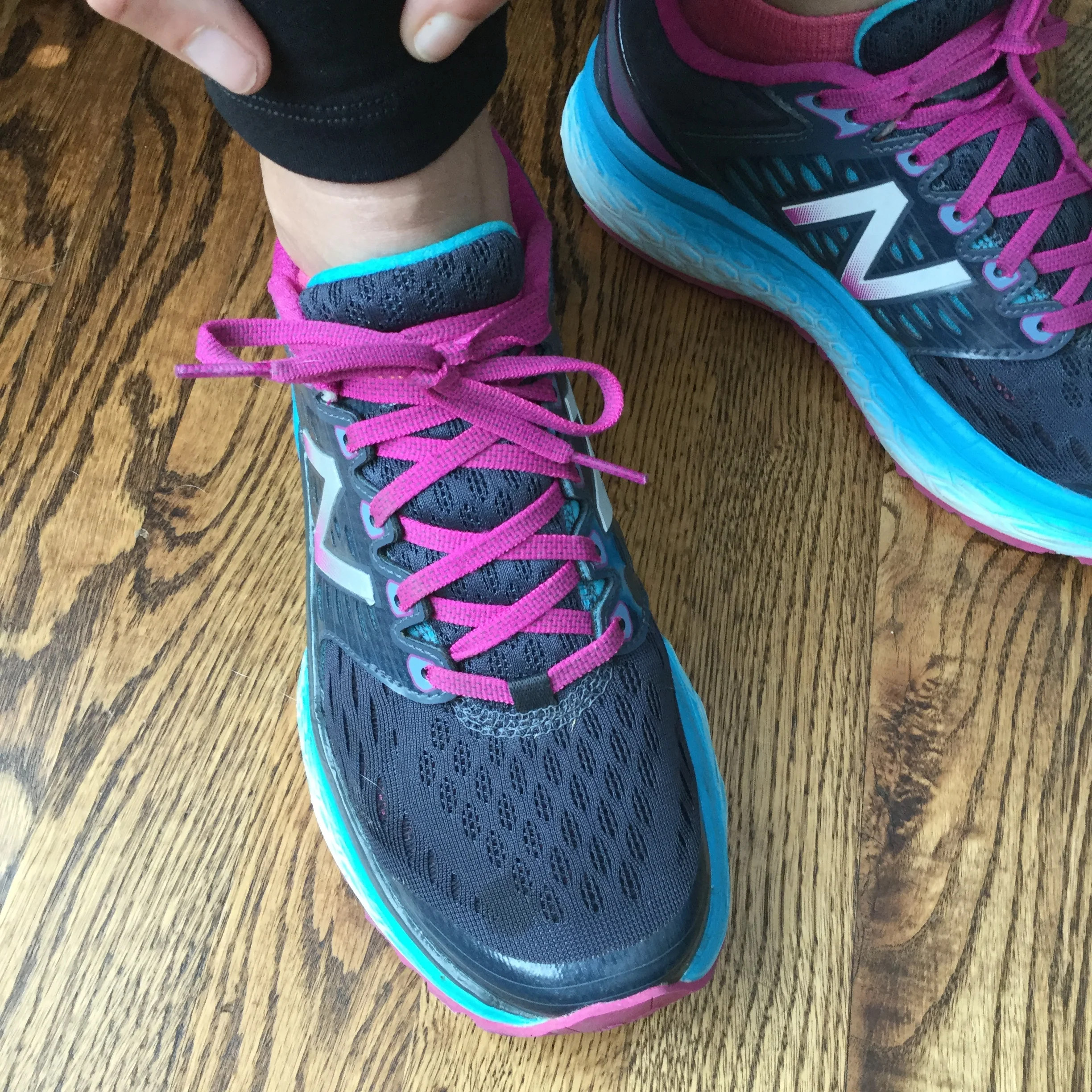Hi, Friends! Welcome to another edition of Running A-to-Z. If you've been following along, each week I cover a running-related topic following the order of the alphabet. I can't believe we are on letter 'W" already. Time flies when you're having fun blogging about running. If you missed any posts in this series you can catch up on letters A-V here.
W is for Weight Loss: Running for Weight Loss
Weight loss should be easy. In order to lose weight you must create a calorie deficit by consuming less calories than the calories burned from maintaining your resting metabolic rate and physical activity. Eat less. Workout more. Easy, right?
Not so fast. Our bodies are not machines that simply take in fuel and use it until it's gone, there are a lot of factors that go into weight loss: your genetics, your environment, your physiology (hormonal or metabolic conditions), your mindset and your lifestyle & exercise habits.
Since I am not a scientist, doctor or nutritionist we are just going to cover the basics of running for weight loss. The way I see it, It comes down to three factors:
AEROBIC EXERCISE
Running is a great way to burn calories when you are trying to lose weight. Running burns approximately 100 calories per mile or every 10-12 minutes (depends on some factors, but this is a reasonable average). It is important to note that if you don't like running, then feel free to substitute another cardio exercise that you do enjoy. But I guess if you didn't enjoy running then probably you wouldn't be here, unless you're my mom or my best friend. (Hi, Mom.)
If you are already running, you have a few choices to increase calorie burn. It is generally recommended 250 minutes of aerobic exercise a week for weight loss, which is about 4 hours a week. In short, try to get in 30-45 minutes of cardio most days of the week, but please take rest days.
RUN MORE
If you are currently not running 250 minutes a week, slowly build up the time you spend running by just adding 15 minutes extra a day or one mile a week for three weeks, then back off the mileage the 4th week to recover. Repeat this process until you reach your time goal. Adding too much too soon will only lead to injury or burnout, so it is better to increase slowly over time. The most important thing is to find something that is sustainable.
RUN AT HIGHER INTENSITY
Short on time? Running High Intensity Interval Training (HIIT) workouts may be the answer. After warming up, trying running for one minute a high intensity that elevates your heart rate and breathing rate until you couldn't hold a conversation outside of a couple words at a time. Then walk or jog to recover for a minute (or longer if needed). Repeat several times for a short and effective workout. You'll increase your calorie burn compared to steady-state running and increase your EPOC (Excess post-exercise oxygen consumption) which means that you are still are burning calories at a higher rate after you complete your workout. My note of caution is to always sandwich high intensity days between low intensity days and rest days. Don't perform high intensity workouts back to back. Never increase intensity and mileage in the same week, as this is a recipe for injury. Give HIIT workouts a try one or two days a week for weight loss.
VARY YOUR WORKOUTS
You body is very good at adapting, which means it gets more efficient performing the workouts. This is good and bad. Great that the workout feels easier, but not so great that you are not burning as many calories as you were three months ago doing the same activity. The key is to continually change the variables so you can continue to improve. You can adjust your pace (run faster), the rest intervals (shorter), the time spent running (longer) or the number of days (more) to continue to progress.
STRENGTH TRAINING
Strength training is essential to weight loss. You can run and lose weight, but weight training helps you build and maintain (aka not lose) muscle mass. Muscle requires more energy at rest, so the more muscle you have the more calories you burn when you are not working out. Weight training increases your metabolic rate, maintains and builds muscle mass, improve performance and helps prevent injury. You don't have to turn into a gym rat, but make time 2-3 days a week for a 30 minute full-body workout session (or maybe 15 minutes after you finish your run several times a week). Runners should put extra focus on hip/core exercises.
NUTRITION
Nutrition is probably the most important factor when trying to lose weight. As we discussed above, you want to create a calorie deficit in order to lose weight. We sometimes wonder why runners gain weight when training for marathon? It happens to the best of us. How does someone run so many miles and still not lose weight? Again there are a lot of factors at play, but it often comes down to nutrition.
Running can make you feel very hungry. If you ran a 14 mile training run, you may feel you deserve that large bacon cheeseburger, side of fries and 2 cold beers. And honestly, I am all about balance. Maybe you did deserve it and that's fine, but once in awhile, not all the time. It's great when it is the exception, not the rule. A cheeseburger after every training run will kill your weight loss efforts. Save it for race day celebrations.
When you are training heavily you may feel hungrier than usual, all the time. It may help to eat small but frequent nutrient-dense meals (aka mostly whole foods) to help curb the hunger. Generally speaking most people do well to eat protein and most of their carbs surrounding their workouts.
The key is to find the balance. You know when your energy is in balance (not too much, not too little) when you look, feel and perform your best. Eat too little and you will feel it and see it in your performance, eat too much and it can lead to weight gain or stalled weight loss. If you struggle to find this balance, I recommend that you work with a nutritionist or registered dietitian (RD).
If you want to use running as a tool to lose weight, I think you are on the right track. You may need to increase the time and/or the intensity you spend running (slowly over time). Don't forget the importance of weight training in the weight loss puzzle and nutrition may be the most important component. Creating a calorie deficit while still maintaining an energy balance is the key to successful weight loss.
Have questions? Leave them in the comments or be a part of my new series "Ask the Trainer" and have your questions answered in a future blog post.
LIke this post? It helps me when you share.
I am a NASM personal trainer and RRCA adult distance running coach that specializes in strength training for runners. I offer in-person training in the Shredshed, online training and Fit to Run bootcamps. If you are interested in a more in-depth running or strength training plan, please contact me. Have questions? I'd love to help.
While I am a certified personal trainer, I am not your personal trainer. Since I don't know your exercise abilities, injury background or medical history, please see your doctor before beginning any new exercise program. This is an opinion blog. No information in this blog is intended to be taken as medical advice or prescription. Please see your doctor and/or registered dietitian for any health concerns.











